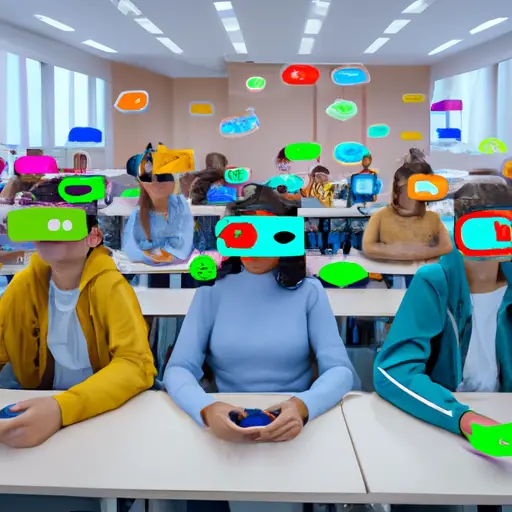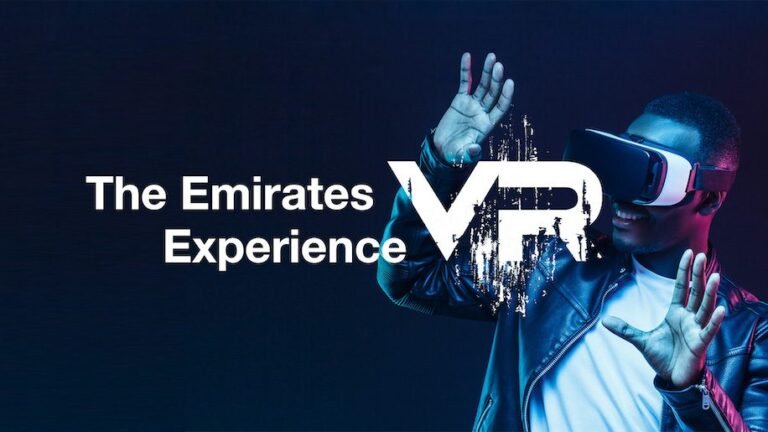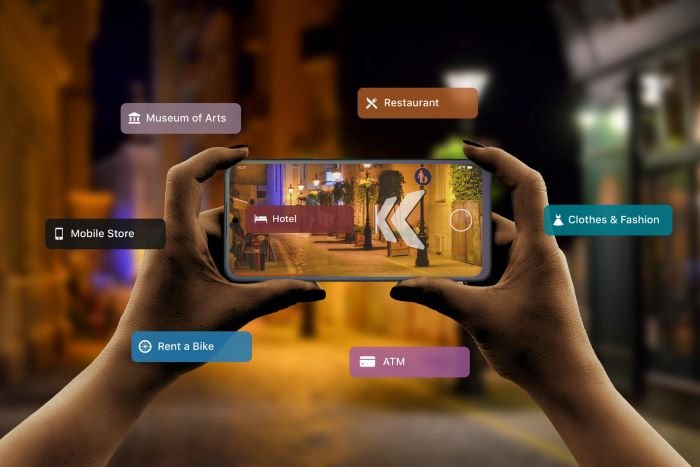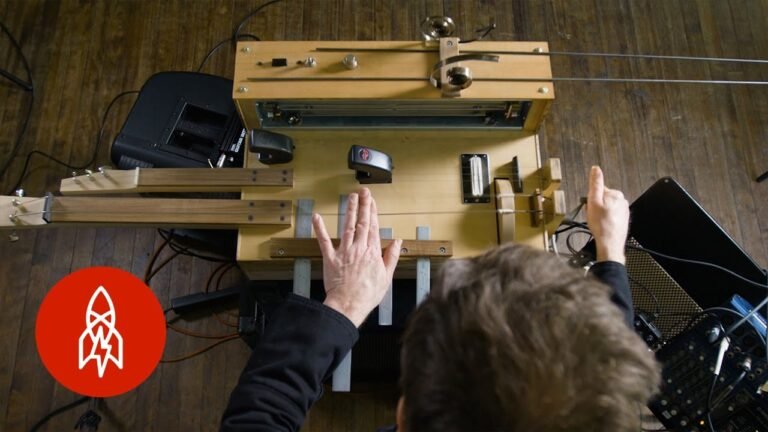Exploring the endless possibilities of Augmented Reality Apps
Imagine a world where you could overlay digital information onto your physical surroundings, seamlessly merging the virtual and real world. Augmented Reality (AR) apps are making this vision a reality, transforming the way we interact with technology. From enhancing gaming experiences to aiding in education and product visualization, the possibilities seem endless. In this article, we will explore the exciting potential of AR apps and how they are reshaping various industries. So, grab your smartphone and get ready to step into a world where imagination knows no bounds.
The Basics of Augmented Reality Apps
What is augmented reality?
Augmented reality (AR) is a technology that combines the real world with virtual elements, creating a mixed reality experience. It enhances and overlays digital information onto the physical environment, allowing users to interact with virtual objects and scenes in real time. This immersive technology takes advantage of the capabilities of smartphones, tablets, and other devices, utilizing their cameras, sensors, and display screens.
What are augmented reality apps?
Augmented reality apps are applications that utilize the AR technology to provide users with a range of experiences, from gaming and entertainment to education and marketing. These apps use the device’s camera to capture the real world and then project virtual elements into the scene, making it seem like they exist in the physical environment. Users can interact with these virtual objects, manipulating them and exploring them as if they were real.
How do augmented reality apps work?
Augmented reality apps use a combination of computer vision, sensors, and algorithms to track the user’s position and orientation in the physical world. The camera captures the real-world scenes, and the app analyzes the data to detect markers or objects of interest. Once the app identifies these markers, it can overlay virtual content onto them, creating the augmented reality experience. The app then adjusts the position and orientation of the virtual elements in real time to match the user’s movement, creating a seamless integration between the real and virtual worlds.
Benefits of Augmented Reality Apps
Enhanced user experience
One of the main benefits of augmented reality apps is the enhanced user experience they provide. By overlaying virtual elements onto the real world, these apps create a more immersive and engaging experience for users. Whether it’s playing a game, trying on clothes, or exploring a virtual museum, augmented reality apps elevate the user’s interaction and make it feel more realistic and exciting.
Improving education and training
Augmented reality apps have incredible potential to revolutionize education and training. By creating interactive and immersive learning experiences, these apps can make educational content more engaging and understandable. For example, a history lesson can come to life with virtual reenactments, or a science experiment can be simulated in a virtual lab. Augmented reality apps provide opportunities for hands-on learning and allow students and trainees to explore and interact with complex concepts in a more tangible way.
Revolutionizing marketing and advertising
Augmented reality apps have also transformed the marketing and advertising industry. These apps provide innovative ways for companies to showcase their products and engage with customers. From virtual try-on experiences in the fashion industry to interactive product demos, augmented reality apps allow customers to visualize and experience products before making a purchase. This technology also enables targeted and personalized advertising, tailoring messages and offers based on the user’s preferences and location.

This image is property of evolvetechtrends.com.
Popular Augmented Reality Apps
Pokémon Go
Pokémon Go took the world by storm when it was released in 2016. This augmented reality game allows players to catch virtual creatures called Pokémon in real-world locations. By using the device’s GPS and camera, Pokémon Go overlays Pokémon onto the player’s surroundings, prompting them to explore their environment to capture and collect these virtual creatures. The game was a massive success, combining the nostalgia of the Pokémon franchise with the innovative use of augmented reality technology.
IKEA Place
IKEA Place is an augmented reality app developed by the furniture giant IKEA. This app allows users to virtually place furniture and home decor items in their own space to see how they look and fit before making a purchase. By leveraging augmented reality, IKEA Place simplifies the furniture shopping experience and enables customers to visualize how different products will fit into their homes. This app revolutionizes the way people shop for furniture, eliminating the need for physical measurements and guesswork.
Snapchat
Snapchat, a popular social media platform, also introduced augmented reality features through its Lens Studio. Snapchat’s lenses use augmented reality technology to overlay various effects, filters, and animations onto users’ faces or surrounding environment. From playful masks and filters to creating interactive experiences with 3D objects, Snapchat’s augmented reality lenses have become a beloved feature of the app, allowing users to express themselves creatively and enhance their social media presence.
Augmented Reality Apps in Gaming
Real-world integration in games
Augmented reality has had a significant impact on the gaming industry, transforming how players engage with virtual worlds. By integrating real-world elements into games, augmented reality apps create an immersive gaming experience that blurs the line between the virtual and physical realms. For example, players can engage in treasure hunts in their own neighborhood or battle virtual creatures within their surroundings, making the gaming experience more dynamic and interactive.
Multiplayer and social interaction
Augmented reality apps also enhance multiplayer and social interaction in gaming. These apps enable players to connect with friends and other users, collaborating or competing in augmented reality environments. Real-world locations can serve as meeting points for players, and virtual objects can be shared and interacted with, fostering a sense of community and social engagement. Augmented reality gaming brings people together in new and exciting ways, promoting collaboration and friendly competition.
Future possibilities and potential
The future of augmented reality gaming is full of possibilities and potential. As technology advances, augmented reality games could become more sophisticated and realistic, incorporating advanced graphics, artificial intelligence, and haptic feedback. The integration of wearable devices, such as smart glasses or contact lenses, could create even more immersive gaming experiences, removing the need for handheld devices. Augmented reality gaming holds the promise of transporting players to entirely new worlds, blending reality and fantasy in unprecedented ways.
This image is property of miro.medium.com.
Augmented Reality Apps in Education
Virtual field trips and exploration
One of the most significant applications of augmented reality in education is the ability to take students on virtual field trips and exploration. Augmented reality apps can recreate historical sites, natural wonders, and cultural landmarks, allowing students to explore and learn about them from the comfort of their classrooms. Whether it’s visiting ancient ruins or exploring the depths of the ocean, virtual field trips provide students with immersive and educational experiences that might otherwise be inaccessible.
Interactive learning experiences
Augmented reality apps also facilitate interactive learning experiences. These apps can overlay additional information, 3D models, or simulations onto textbook illustrations or real-world objects, making abstract or complex concepts more tangible and understandable. Students can manipulate and interact with virtual objects, observing how they behave and experimenting with different variables. Augmented reality apps bring the learning materials to life, fostering a deeper understanding and engagement with the subject matter.
Enhancing understanding and retention
By engaging multiple senses and providing interactive experiences, augmented reality apps enhance understanding and retention of educational content. Studies have shown that incorporating augmented reality in education improves students’ cognitive abilities, critical thinking skills, and long-term memory. The immersive nature of augmented reality makes learning more engaging and memorable, as students form stronger connections between the virtual content and their real-world experiences.
Augmented Reality Apps for Retail
Virtual try-on and fitting
Augmented reality apps have revolutionized the way customers shop for clothing and accessories. Virtual try-on and fitting apps allow users to virtually try on clothing items, eyewear, or even makeup products, seeing how they look and fit on themselves. By overlaying virtual representations of the products onto the user’s body or face, these apps provide a more convenient and accurate way to make purchasing decisions. Virtual try-on apps save time and eliminate the need for physical fitting rooms, enhancing the online shopping experience.
Showcasing products in 3D
Augmented reality apps also enable retailers to showcase their products in 3D. By creating virtual models or representations of their products, retailers can provide customers with a more detailed and interactive view. Customers can explore the products from all angles, zoom in to examine intricate details, and even interact with the virtual objects. This immersive experience gives customers a better understanding of the product’s features, materials, and functionality, leading to more informed purchasing decisions.
Improving customer engagement and satisfaction
Augmented reality apps in retail improve customer engagement and satisfaction by delivering personalized and interactive experiences. These apps can offer customized recommendations based on the user’s preferences, previous purchases, or location. They can also provide additional information or suggestions when the user interacts with specific products or displays. Augmented reality apps enhance the overall customer journey, making it more enjoyable and increasing the likelihood of repeat purchases and customer loyalty.

This image is property of blog.discoveryeducation.com.
Augmented Reality Apps in Marketing
Interactive product demonstrations
Augmented reality apps offer marketers an innovative way to showcase their products through interactive demonstrations. Instead of relying on static images or videos, these apps allow users to engage with virtual versions of the products in real-time. Customers can explore the features, functionalities, and benefits of the products through interactive elements, such as virtual buttons, sliders, or animations. By providing an immersive and interactive experience, augmented reality apps capture users’ attention and create a lasting impression.
Virtual showrooms and catalogs
Augmented reality apps also enable the creation of virtual showrooms and catalogs. Instead of traditional physical displays or catalogs, companies can use these apps to showcase their products in a virtual environment. Customers can browse through different products, visualize them in various settings, and even customize options, all within the app. Virtual showrooms and catalogs provide a convenient and engaging way for customers to explore and discover products, eliminating the need for physical stores or printed materials.
Personalized and targeted advertising
Another advantage of augmented reality apps in marketing is the ability to deliver personalized and targeted advertising. These apps can analyze user data, such as location, demographics, or preferences, to tailor advertisements and offers to specific individuals. Augmented reality ads can be integrated seamlessly into the app experience, providing contextual relevance and enhancing user engagement. By delivering personalized advertisements, companies can increase the effectiveness of their marketing campaigns and improve the return on investment.
Augmented Reality Apps in Healthcare
Medical training and simulation
Augmented reality apps have tremendous potential in the healthcare industry, particularly in medical training and simulation. These apps can provide virtual simulations of medical procedures, allowing students and healthcare professionals to practice and refine their skills in a safe and controlled environment. Augmented reality overlays virtual patients or medical scenarios onto the real world, enabling users to interact with these virtual elements and gain practical experience. This technology enhances medical training, accelerates learning, and improves patient outcomes.
Enhancing patient care and diagnostics
Augmented reality apps also have the potential to enhance patient care and diagnostics. By overlaying relevant medical information onto patients’ bodies or medical images, healthcare professionals can access real-time data and insights during examinations. Augmented reality can improve accuracy in surgical procedures, aiding in precise localization and guiding the surgeon’s movements. Additionally, augmented reality can assist in diagnoses by providing 3D visualizations of medical images or by overlaying data onto the patient’s anatomy, helping healthcare professionals make more informed decisions.
Assisting in surgeries and procedures
During surgical procedures or complex medical interventions, augmented reality apps can provide real-time guidance and assistance. Surgeons can wear AR-enabled devices to overlay critical information, such as CT scans or X-ray images, directly onto the patient in the operating room. This technology allows surgeons to see through the patient’s body and visualize important structures or problem areas, improving accuracy and reducing the risk of complications. Augmented reality aids in precision, enhances patient safety, and facilitates more effective surgical interventions.

This image is property of logicsimplified.com.
Challenges of Augmented Reality Apps
Hardware compatibility and requirements
One challenge of augmented reality apps is the hardware compatibility and requirements. While the technology is becoming more accessible, not all devices have the necessary capabilities to run AR apps smoothly. Some low-end smartphones or older models may not have the processing power or sensors required for a seamless augmented reality experience. This creates a fragmentation in the market and limits the potential user base for these apps.
Data privacy and security concerns
As with any technology that collects and utilizes user data, augmented reality apps raise concerns about data privacy and security. These apps often require access to the camera, microphone, location, and other sensitive information, which can lead to potential privacy breaches if not adequately protected. Companies developing augmented reality apps must prioritize data security and establish robust privacy practices to ensure user trust and safeguard their customers’ data.
Cost and development challenges
Developing high-quality augmented reality apps can be costly and complex. Building realistic and interactive virtual content requires skilled developers, designers, and 3D artists. The development process involves creating 3D models, optimizing them for performance, and integrating them seamlessly into the real world. The costs associated with hiring experts and acquiring the necessary technology can be a barrier for small or independent developers. Additionally, the rapid pace of technological advancements in augmented reality requires developers to constantly adapt and update their apps, adding to the development challenges.
Future of Augmented Reality Apps
Integration with wearable devices
One exciting prospect for the future of augmented reality apps is the integration with wearable devices, such as smart glasses or contact lenses. Wearable devices specifically designed for augmented reality can provide hands-free and immersive experiences, making the technology even more seamless and accessible. These devices can incorporate advanced features like eye tracking and gesture recognition, enabling more natural interactions with virtual content. Integration with wearable devices opens up new possibilities for augmented reality apps in various industries, from gaming to healthcare and beyond.
Expanded industrial and enterprise applications
While augmented reality apps have gained popularity in consumer-oriented industries, their potential in industrial and enterprise applications is vast. Augmented reality can revolutionize areas like manufacturing, maintenance, and training in various industries. By overlaying relevant information onto the physical environment, augmented reality apps can guide workers through complex tasks, provide real-time data and instructions, and improve productivity. From remote assistance to assembly line optimization, augmented reality apps have the potential to transform the way businesses operate.
Advancements in AR technology
As technology continues to advance, augmented reality apps are poised to become even more powerful and sophisticated. Advancements in hardware, such as improved cameras and sensors, will enhance the accuracy and realism of augmented reality experiences. The development of more advanced algorithms and machine learning techniques will enable better tracking and registration of virtual elements in the real world. With advancements in graphics and rendering capabilities, augmented reality apps will deliver higher quality and more immersive visual experiences. The future of augmented reality apps is bright, filled with endless possibilities and potential breakthroughs.
In conclusion, augmented reality apps have opened up a world of possibilities across various industries. From gaming and education to retail and healthcare, these apps are transforming the way we interact with the world around us. Augmented reality apps enhance user experiences, revolutionize marketing and advertising, and have the potential to revolutionize industries like education and healthcare. Despite the challenges they face, the future of augmented reality apps is promising, with expanded applications, wearable device integration, and advancements in technology on the horizon. As this technology continues to evolve, the possibilities for augmented reality apps are limited only by our imagination.






